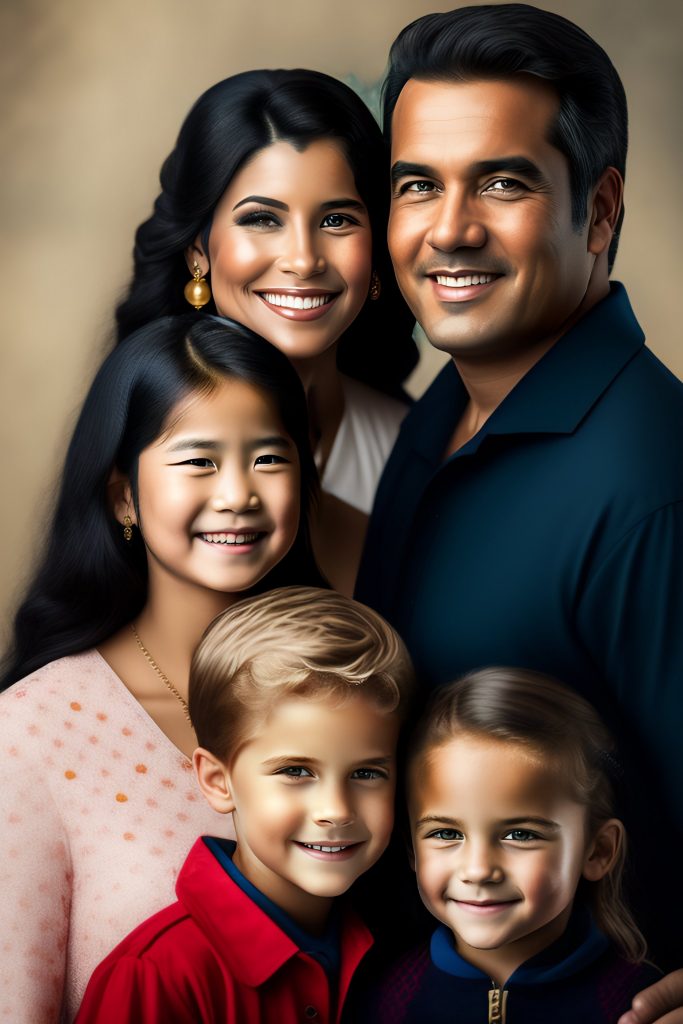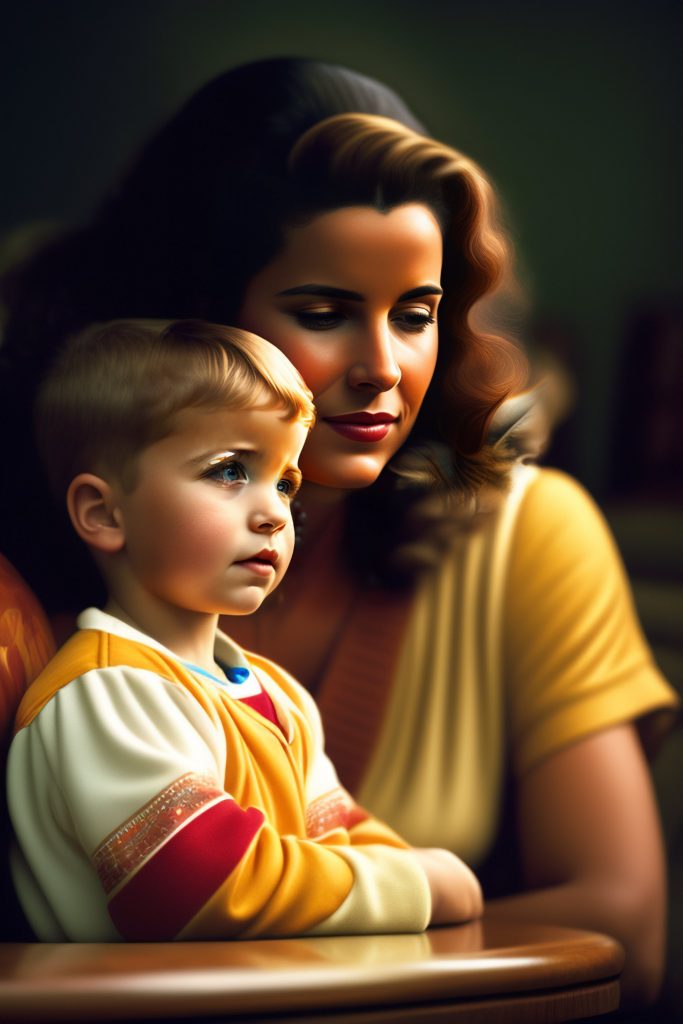
” All Kids need is a little help, A little Hope and Somebody who believes in them!”
Child behavior refers to the actions and reactions of children in response to their environment, other people, and their own thoughts and feelings. This includes emotional, social, cognitive, and physical behaviors. Understanding child behavior requires taking into account the child’s individual needs and context, and seeking input from mental health professionals, educators, and caregivers who can help to assess and support the child’s development.
Treatment for child behavioral problems can refer to a variety of interventions aimed at improving the behavior of children who are exhibiting problematic or disruptive behaviors. These behaviors can include things like aggression, defiance, impulsivity, hyperactivity, and other issues that can interfere with the child’s daily functioning and relationships with others.
There are a number of different approaches to treating behavioral problems in children, and the best approach will depend on the specific needs and circumstances of the child and their family.
Here are a few common types of treatment that may be used:
- Behavioral therapy: This type of therapy focuses on identifying problematic behaviors and teaching the child new, more adaptive behaviors to replace them. Behavioral therapy may involve positive reinforcement, such as rewarding the child for good behavior, or negative consequences, such as removing privileges for negative behavior.
Behavioral therapy is a type of therapy that focuses on changing problematic behaviors and teaching new, more adaptive behaviors to replace them. This type of therapy is often used to treat a range of mental health conditions, including anxiety disorders, depression, and behavioral problems in children.
It is based on the principle that behavior is learned, and therefore can be changed through conditioning and reinforcement. In therapy, the client and therapist work together to identify specific behaviors that the client wants to change, and then develop strategies to reinforce more positive behaviors while reducing or eliminating problematic ones.
This might involve things like setting goals, using positive reinforcement (such as rewards for desired behaviors), and removing negative consequences for undesirable behaviors. Behavioral therapy is often structured and focused on specific goals, and can be a highly effective treatment for many individuals.
Behavioral therapy focuses on changing problematic behaviors by teaching new, more adaptive behaviors to replace them. This type of therapy is based on the idea that behavior is learned and can be changed through conditioning and reinforcement.
It is often used to treat a range of mental health conditions and is structured and focused on specific goals. In therapy, the client and therapist work together to identify specific behaviors to change and develop strategies to reinforce positive behaviors and reduce negative ones. Overall, behavioral therapy can be a highly effective treatment for many individuals.
2. Cognitive-behavioral therapy (CBT): This type of therapy focuses on identifying the thoughts and beliefs that underlie a child’s problematic behavior, and working to change those thoughts and beliefs. CBT may also involve behavioral techniques to reinforce positive behavior.
Cognitive-behavioral therapy (CBT) is a type of psychotherapy that focuses on the relationship between an individual’s thoughts, feelings, and behaviors. It is based on the idea that our thoughts and beliefs about ourselves, others, and the world around us shape our emotions and behaviors. CBT aims to help individuals identify and challenge negative or irrational thoughts and beliefs, and replace them with more realistic and positive ones. This, in turn, can lead to changes in emotions and behaviors, and ultimately improve overall well-being.
CBT is a structured and goal-oriented approach that typically involves a set number of sessions. During the sessions, the therapist works with the individual to identify problematic thoughts, behaviors, and emotions, and to develop strategies to address them. This may involve techniques such as cognitive restructuring, behavioral activation, and exposure therapy.
Cognitive restructuring involves identifying and challenging negative thought patterns and replacing them with more positive ones. Behavioral activation involves engaging in activities that bring pleasure or a sense of accomplishment, even when one may not feel like doing so. Exposure therapy involves gradually exposing the individual to feared situations or objects in a safe and controlled manner.
CBT has been shown to be effective in treating a wide range of mental health conditions, including anxiety disorders, depression, post-traumatic stress disorder, obsessive-compulsive disorder, and eating disorders. It can also be helpful for individuals dealing with relationship issues, stress, and low self-esteem. CBT can be delivered in various formats, including individual therapy, group therapy, and online therapy. Overall, CBT is a evidence-based and practical approach to therapy that can help individuals develop skills to manage their thoughts, emotions, and behaviors more effectively.
In a summary Cognitive-behavioral therapy (CBT) is a type of psychotherapy that aims to help individuals identify and challenge negative or irrational thoughts and beliefs, and replace them with more positive and realistic ones. CBT is structured and goal-oriented, and typically involves a set number of sessions.
It has been shown to be effective in treating a range of mental health conditions, including anxiety disorders, depression, and post-traumatic stress disorder. CBT is a evidence-based and practical approach to therapy that can help individuals develop skills to manage their thoughts, emotions, and behaviors more effectively.
3. Parent training: Often, parents play a key role in helping to improve a child’s behavior. Parent training programs can provide parents with the skills and strategies they need to manage their child’s behavior effectively.
Parent training is a type of therapy designed to help parents develop the skills and knowledge necessary to manage their child’s behavior more effectively. It is typically used to help parents of children with disruptive behavior disorders, such as attention-deficit/hyperactivity disorder (ADHD), oppositional defiant disorder (ODD), and conduct disorder (CD).
Parent training typically involves teaching parents specific strategies for managing their child’s behavior, such as praise and rewards for positive behavior, consistent consequences for negative behavior, and effective communication skills.
Parent training can be delivered in a variety of formats, including individual therapy, group therapy, and online programs. It is usually conducted by a licensed therapist or counselor with expertise in child behavior and development. The therapy may involve role-playing exercises, homework assignments, and feedback from the therapist.
Research has shown that parent training can be an effective treatment for children with disruptive behavior disorders, with benefits lasting over the long term. In addition to improving child behavior, parent training can also improve parent-child relationships, reduce parental stress, and improve parental mental health. Overall, parent training is a practical and evidence-based approach to helping parents develop the skills and knowledge necessary to manage their child’s behavior more effectively.
Parent training is a type of therapy designed to help parents of children with disruptive behavior disorders learn specific strategies for managing their child’s behavior more effectively. It typically involves teaching parents skills such as praise and rewards for positive behavior, consistent consequences for negative behavior, and effective communication.
It can be delivered in various formats and has been shown to be effective in improving child behavior, parent-child relationships, reducing parental stress, and improving parental mental health. Overall, parent training is a practical and evidence-based approach to helping parents develop the skills and knowledge necessary to manage their child’s behavior.
4. Medication: In some cases, medication may be used to help manage symptoms of behavioral problems, particularly if the child is also dealing with a co-occurring condition such as ADHD or anxiety.
Medication is a common treatment option for child behavioral problems, particularly for those with attention-deficit/hyperactivity disorder (ADHD), oppositional defiant disorder (ODD), and conduct disorder (CD). Medications used to treat these conditions include stimulants, such as methylphenidate and amphetamine, as well as non-stimulant medications, such as atomoxetine and guanfacine. These medications work by increasing the levels of certain neurotransmitters in the brain, which can improve attention, reduce impulsivity, and reduce hyperactivity.
Medication is usually prescribed in conjunction with other treatment options, such as therapy and parent training. The decision to use medication is typically made by a psychiatrist or pediatrician, based on the child’s symptoms, medical history, and other factors. Medication should only be used under close supervision and with regular monitoring by a healthcare professional.
While medication can be effective in treating child behavioral problems, it is not a cure and does have potential side effects. Common side effects of stimulant medication include decreased appetite, insomnia, and irritability, while non-stimulant medications may cause drowsiness, stomach upset, and dry mouth. Long-term effects of medication use are not yet fully understood, and more research is needed to determine the safety and efficacy of these medications over time.
Overall, medication can be a helpful treatment option for child behavioral problems when used in conjunction with other therapies and under close supervision by a healthcare professional. It is important for parents to work closely with their child’s healthcare team to determine the best course of treatment for their child’s individual needs.
It’s important to note that treatment for child behavioral problems is not a one-size-fits-all approach, and what works for one child may not work for another. A qualified mental health professional can help evaluate the child’s specific needs and develop a tailored treatment plan that addresses their unique situation.
Here is an Example of how treatment for child behavioral problems might be applied in real life:
Samantha is a 10-year-old girl who has been having behavioral problems at home and at school. Her parents have noticed that she is easily irritable, has trouble focusing on tasks, and is often argumentative. Samantha’s teachers have also reported that she is disruptive in class, talks out of turn, and has difficulty following instructions.
After seeking advice from a pediatrician, Samantha’s parents decide to enroll her in behavioral therapy to address her problematic behavior. The therapist conducts a thorough assessment of Samantha’s behavior, identifies the underlying causes of her behavioral issues, and develops a personalized treatment plan.
The treatment plan includes behavioral interventions such as positive reinforcement, time-outs, and social skills training to help Samantha manage her emotions and behavior. The therapist also works with Samantha’s parents to help them implement these strategies at home and provide a consistent environment for Samantha.
Over time, Samantha’s behavior begins to improve. She becomes more cooperative, respectful, and better able to manage her emotions. Her grades at school also start to improve, and her teachers report that she is more focused and engaged in class.
In this example, treatment for child behavioral problems was applied in the form of behavioral therapy. The therapist worked with Samantha and her parents to identify the root causes of her problematic behavior and develop a personalized treatment plan that included behavioral interventions. Through consistent implementation of these strategies, Samantha was able to improve her behavior both at home and at school, leading to better academic performance and an overall improvement in her quality of life.
Treatment for child behavioral problems involves identifying the root causes of problematic behavior and developing a personalized treatment plan that includes behavioral interventions such as positive reinforcement, time-outs, and social skills training. Effective treatment can improve a child’s behavior, academic performance, and overall quality of life.
Recommended Readings
15 Fun and Easy concentration exercises for children to improve focus
15 ways to develop leadership skills in children





